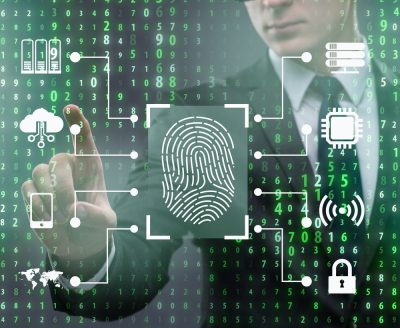Securing insurance transactions: The role of biometric technology
Ensuring robust security measures is essential in today’s digital landscape, where cyberattacks are serious threats and data breaches occur frequently.
Traditional authentication methods like passwords and PINs are becoming less effective against sophisticated hacking techniques. For instance, brute-force attacks allow hackers to automate a series of letters and numbers to forcibly enter a system.With such security measures in place, hackers can easily access users’ personal files, finances, and other records, leading to potential blackmail and even bankruptcy.
However, with biometric authentication, a cutting-edge security system, there has been significant reduction of cyberthreats, and a higher level of security for sensitive information.
Understanding biometrics
Biometrics refers to the process of capturing and verifying an individual’s identity using unique behavioral or physical characteristics. Biometric scanners capture unique personal characteristics that are inherently difficult to replicate, making them a robust solution for security.
Unlike traditional authentication methods like passwords or PINs, which can be easily forgotten, stolen and even guessed, biometric identifiers are directly tied to an individual person.
Types of biometric systems
Depending on the biological information collected, biometric systems fall into several categories:
- Fingerprint recognition: Utilizes the unique patterns of ridges and valleys on an individual’s fingertip.
- Facial recognition: Analyzes facial features, such as the distance between the eyes, nose width, and jawline.
- Iris scanning: Examines the unique patterns in the colored part of the eye.
- Voice recognition: Identifies individuals based on the unique characteristics of their voice, such as pitch, tone, and speaking style.
- Behavioral biometrics: Includes patterns in how individuals type, walk (gait recognition), or other means by which they interact with devices.
Biometric verification in insurance
The primary advantage of biometric authentication lies in its ability to provide highly accurate and reliable identity verification, significantly reducing the risk of fraud and unauthorized access.
In the insurance industry, this is a game-changer.
According to the FBI, the total cost of insurance fraud (excluding health insurance) is estimated to exceed $40 billion per year.
In medical insurance, where personal information is more prone to being hacked, the situation is even more severe. Solving medical identity theft consumes a considerable amount of time, and only 10% of patients report satisfaction with the resolution of their cases.
The same study explains that on average, patients, hospitals, and insurers spend over 200 hours addressing these incidents.
Roles & success stories of biometric systems in insurance
Numerous insurance companies are already leveraging biometric technology with positive results.
From using voice recognition systems for customer service to facial recognition for secure access to policy information, there are many practical uses of biometric systems in insurance.
Enhancing data protection & privacy
What makes Biometric data highly secure is the fact that it is unique to each individual and difficult to forge.
This ensures that sensitive information is better protected against unauthorized access, providing peace of mind to customers and complying with stringent data protection regulations.
While it is easy to brute force one’s way through PINs and password logins, it is nearly impossible to do so on a fingerprint or iris scan login.
Prudential, for example, has integrated biometric authentication into its mobile app, allowing customers to access their accounts using facial recognition, fingerprint scanning and voice (Prudential Voice). This not only enhances security but also improves user convenience, leading to increased customer satisfaction.
Preventing fraud & identity theft
Biometric systems significantly improve identity verification in the insurance industry by providing a secure and accurate method for confirming an individual’s identity.
By adding an extra layer of security that is difficult to breach, biometric data like iris patterns or voice recognition is unique to each individual and nearly impossible to replicate. This makes it challenging for fraudsters to impersonate someone else or create fake identities.
Streamlining customer onboarding & claims processing
Traditional methods of onboarding customers and processing claims often require extensive paperwork and manual verification, which can be time-consuming.
With biometrics, insurance companies can quickly verify identities using fingerprint scans or facial recognition, reducing the time needed for onboarding new customers or processing claims.
AuthID.ai, a data analytics and fraud prevention software company, provides biometric identity solutions that companies in all industries can implement in their customer onboarding process.
Conclusion
The integration of biometric authentication into the insurance industry represents a significant advancement in security and efficiency.
As traditional methods of identity verification become increasingly vulnerable to sophisticated cyberattacks, biometrics offers a robust solution that leverages unique biological characteristics to ensure secure access and data protection.
Biometric systems in tandem with other advanced security measures like Two-factor authentication (2FA) can help establish a comprehensive framework that enhances overall service and fosters trust among all insurance stakeholders.


